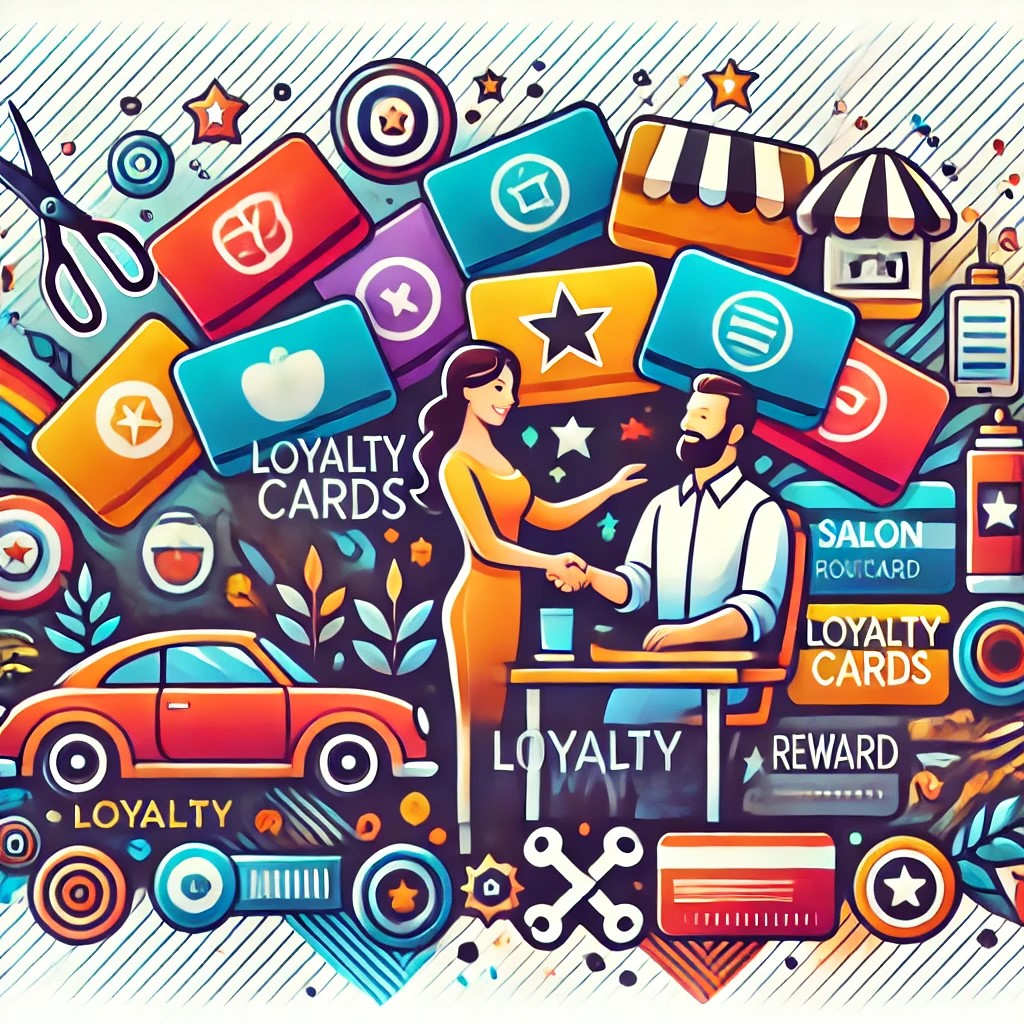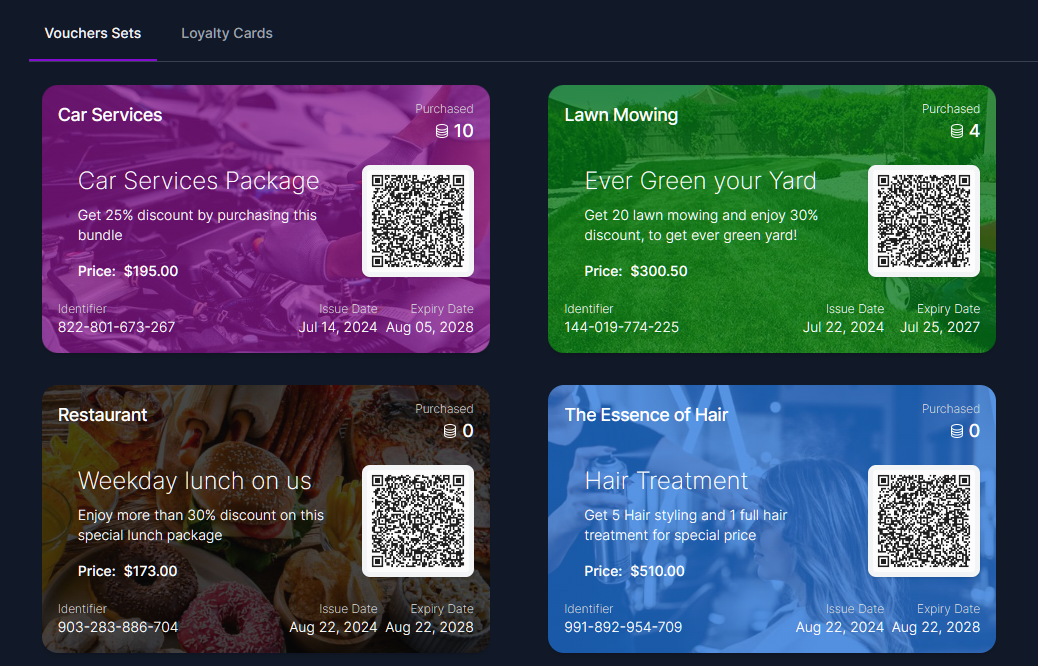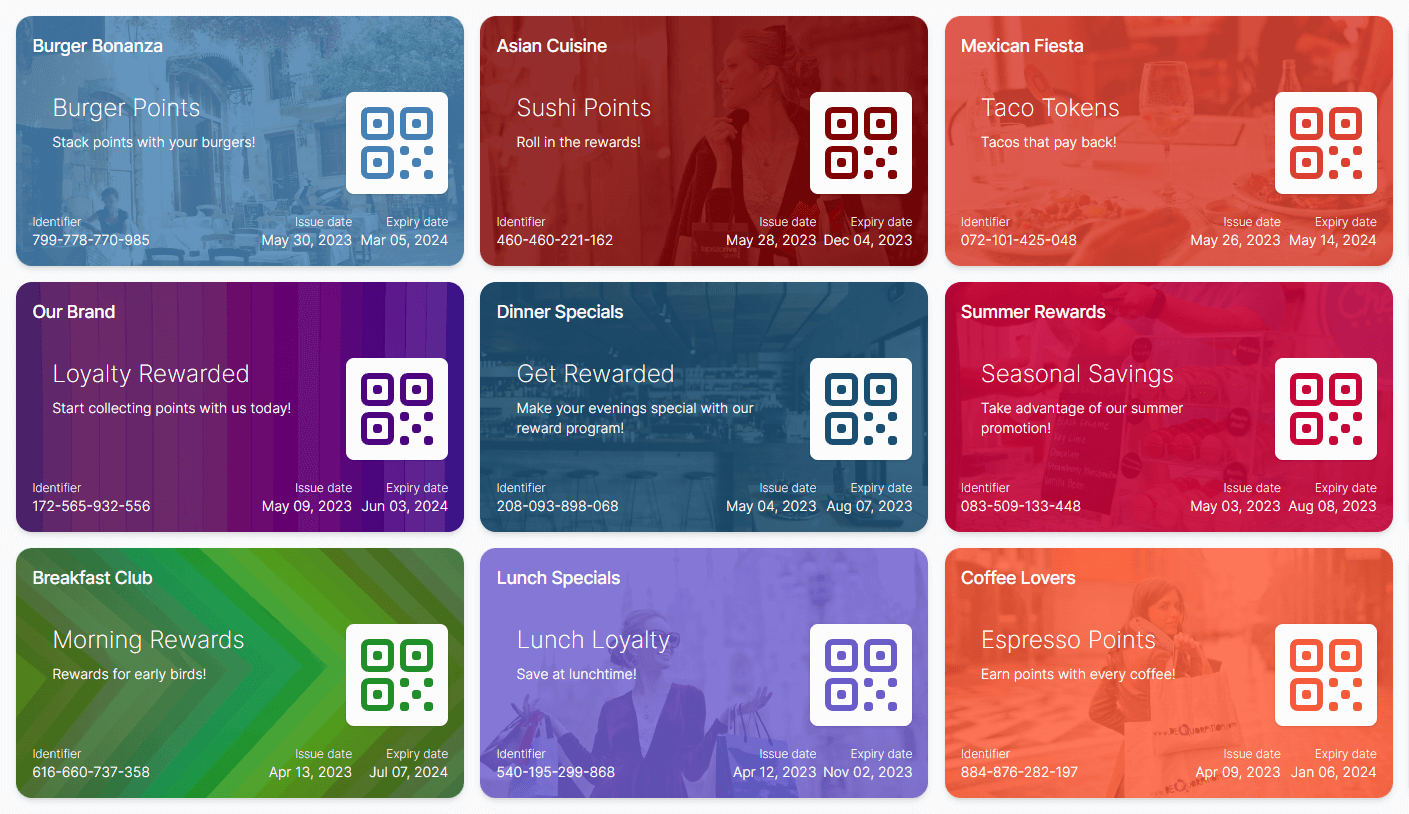Different Types of Loyalty Programs
Understanding Different Types of Loyalty Programs: Which one is for you?
In today’s highly competitive marketplace, businesses must constantly innovate to attract and retain customers. One of the most effective strategies to achieve this is through loyalty programs. These programs reward customers for their continued patronage, encouraging repeat business and fostering brand loyalty. However, not all loyalty programs are created equal. They come in various forms, each tailored to different business models and customer needs. In this article, we’ll explore the different types of loyalty programs, including a unique twist: Product/Service bundles as vouchers sets!
1. Point-Based Loyalty Programs
Overview:
Point-based loyalty programs are among the most common and widely recognized types of loyalty schemes. Customers earn points for each purchase they make, which can later be redeemed for rewards, discounts, or free products/services. The more they spend, the more points they accumulate, creating a direct incentive to increase their spending with the brand.
Benefits:
- Simplicity: Easy for customers to understand and participate in.
- Flexibility: Points can be redeemed for a variety of rewards, allowing businesses to tailor incentives to different customer segments.
- Engagement: Encourages repeat purchases and increases customer lifetime value.
Example:
A coffee shop offers 1 point for every $1 spent. After accumulating 100 points, the customer can redeem them for a free drink or a discount on their next purchase.
2. Tiered Loyalty Programs
Overview:
Tiered loyalty programs reward customers based on their spending level or engagement with the brand. The more they spend or engage, the higher they climb within the program’s tiers, unlocking more valuable rewards and benefits. This creates a sense of exclusivity and encourages customers to reach the next level.
Benefits:
- Motivation: Customers are incentivized to increase their spending to unlock higher-tier rewards.
- Customer Segmentation: Allows businesses to segment their customers based on their value and tailor rewards accordingly.
- Long-Term Engagement: Encourages sustained engagement over time as customers strive to maintain or reach higher tiers.
Example:
An airline offers three tiers: Silver, Gold, and Platinum. Silver members earn 1 mile for every mile flown, Gold members earn 1.5 miles, and Platinum members earn 2 miles, along with additional perks like priority boarding and lounge access.
3. Paid Loyalty Programs (VIP Memberships)
Overview:
Paid loyalty programs, also known as VIP memberships, require customers to pay an upfront fee to join. In return, members receive exclusive benefits such as discounts, free shipping, or access to special products/services. This type of program is particularly effective for businesses with high-frequency customers who see value in the ongoing perks.
Benefits:
- Immediate Revenue: Generates upfront revenue from membership fees.
- Exclusive Experience: Creates a sense of exclusivity and value for members.
- Increased Spend: Members often feel compelled to maximize their membership by spending more frequently.
Example:
An online retailer offers a VIP membership for $99 per year, providing members with free shipping on all orders, early access to sales, and exclusive discounts.
4. Cashback Loyalty Programs
Overview:
Cashback loyalty programs reward customers with a percentage of their purchase amount returned to them in the form of cash or credit. This type of program is particularly appealing to price-sensitive customers who appreciate immediate financial rewards.
Benefits:
- Immediate Value: Customers receive immediate financial benefits, increasing satisfaction and loyalty.
- Simplicity: Easy for customers to understand and redeem.
- Retention: Encourages repeat purchases, as customers are motivated to earn more cashback.
Example:
A credit card company offers 2% cashback on all grocery purchases and 1% on all other purchases, credited back to the customer’s account at the end of each billing cycle.
5. Coalition Loyalty Programs
Overview:
Coalition loyalty programs involve multiple businesses partnering to offer a shared loyalty program. Customers can earn and redeem points across a network of participating brands, providing them with more opportunities to earn rewards and more options for redemption.
Benefits:
- Increased Value: Customers benefit from a wider range of earning and redemption options.
- Shared Costs: The cost of running the program is shared among participating businesses.
- Cross-Promotion: Businesses can attract customers from partner brands, increasing their exposure and customer base.
Example:
A coalition program involving a supermarket, a gas station, and a pharmacy allows customers to earn points on purchases made at any of the three locations. Points can be redeemed for discounts or free products at any participating business.
6. Punch Card Loyalty Programs
Overview:
Punch card loyalty programs are a simple, old-school approach to customer loyalty. Customers receive a physical or digital card that gets “punched” or marked each time they make a purchase. After a certain number of punches, they earn a reward, such as a free product or discount.
Benefits:
- Simplicity: Easy to implement and understand.
- Tangible Reward: Provides customers with a clear, tangible goal to work toward.
- Low Cost: Affordable for small businesses to implement without the need for complex technology.
Example:
A sandwich shop offers a punch card that gets marked with each sandwich purchase. After buying 10 sandwiches, the customer receives the 11th sandwich for free.

7. Referral Loyalty Programs
Overview:
Referral loyalty programs incentivize existing customers to refer new customers to the business. When a new customer makes a purchase based on a referral, both the referrer and the new customer receive a reward, such as a discount or free product.
Benefits:
- Customer Acquisition: Drives new customer acquisition through word-of-mouth marketing.
- Cost-Effective: Leverages existing customers to bring in new business, reducing marketing costs.
- Mutual Benefit: Rewards both the referrer and the new customer, encouraging participation.
Example:
A fitness center offers members a $20 discount on their next month’s membership fee for each new member they refer, while the new member also receives a $20 discount on their first month.
8. Hybrid Loyalty Programs
Overview:
Hybrid loyalty programs combine elements of two or more different loyalty program types to create a more comprehensive and engaging experience for customers. This approach allows businesses to tailor their loyalty offerings to meet the diverse needs of their customer base.
Benefits:
- Customization: Offers a more personalized experience by combining different reward structures.
- Flexibility: Allows customers to engage with the program in multiple ways, increasing overall participation.
- Enhanced Engagement: Appeals to a broader audience by catering to different customer preferences.
Example:
A retail store offers a program that combines point-based rewards with tiered benefits. Customers earn points on every purchase and can redeem them for rewards, while also climbing tiers to unlock exclusive discounts and early access to sales.
9. Product/Service Bundles as Vouchers Sets
Overview:
One of the more innovative loyalty strategies is offering product or service bundles as vouchers sets. Customers purchase a bundle of services or products at a discounted rate, receiving a set of vouchers that they can redeem over time. This approach provides customers with flexibility and convenience while encouraging repeat business.
Benefits:
- Value: Customers receive a bundle of services or products at a reduced price, providing them with greater value.
- Convenience: Vouchers can be redeemed at the customer’s convenience, making it easier for them to take advantage of the offer.
- Increased Loyalty: By pre-purchasing a bundle, customers are more likely to return to redeem their vouchers, increasing loyalty and repeat business.
- Increased Cash Flow for Business: By pre-selling a bundle, will get the benefit of utilizing a cashflow avaible to bsusiness to utilize.
Example:
A hair salon offers a bundle of 10 haircuts at a discounted rate. The customer receives 10 vouchers, which can be redeemed over the course of a year. This encourages the customer to return regularly, ensuring consistent business for the salon.
Which one will you pick?
Loyalty programs are powerful tools for building and maintaining strong customer relationships. By understanding the different types of loyalty programs available, businesses can select the best strategy to suit their specific needs and customer base. Whether you’re offering traditional point-based rewards, tiered benefits, or innovative product/service bundles as vouchers sets, the key is to create a program that provides real value to your customers. In doing so, you’ll not only foster loyalty but also drive long-term growth and success for your business. We highly recommend you to check the Voucheriser platform and see the features this platform has to offer that helps you achive your customer experience goals and objectives!
Popular Articles

How to Boost Your Cash Flow Using Prepaid Vouchers
Dec, 26 2024

Different Types of Loyalty Programs
Aug, 16 2024








